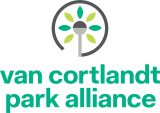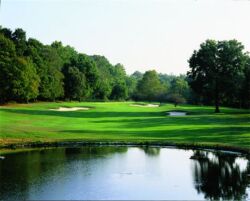Van Cortlandt Park
Croton Woods
Croton Woods is named for the Old Croton Aqueduct that once ran through Van Cortlandt Park. In 1833, New York City’s water supply was inadequate and, when faced with harsh fires, a cholera epidemic, and a growing population, the State Legislature created the New York State Water Commission to help the City respond to its pressing needs. John B. Jervis’s Croton Aqueduct design was approved by referendum in April of 1835. The construction of the aqueduct cost $11.5 million, and it opened on July 4, 1842.
The 41-mile aqueduct ran from the Croton River in Westchester County, down through Van Cortlandt Park and the Bronx to the High Bridge, then across the Harlem River into Manhattan reservoirs in today’s Central Park and Bryant Park. To meet the needs of New York City’s growing population, a new Croton Aqueduct was authorized in 1883 and opened in 1893. The Old Croton Aqueduct served New York City until 1897.
The Old Croton Aqueduct Trail, designated a Scenic and Historic Corridor by the State Legislature in 1976, runs 26 miles from Northern Westchester County into the Croton Woods of Van Cortlandt Park. The trail combines natural beauty with historic artifact. Hikers can see parts of the Aqueduct’s underground tunnel, historic houses, and remains of the Putnam Division of the New York Central Railroad set in a landscape of bedrock and Fordham gneiss, one of the oldest rock formations in the world dating back 1.1 billion years. The woods around the trail are home to pheasant, raccoon, and fox. Near the Bronx-Westchester County line in Van Cortlandt Park, the forest is full of tuliptree (Liriodendron tulipfera), oak (Quercus spp.), and maple (Acer spp.) trees. The Van Cortlandt Golf Course, the Major Deegan Expressway and the Mosholu Parkway make up the boundaries of the Croton Woods.
Around 20,000 years ago, New York was buried beneath massive glaciers. When the ice receded, it left behind the characteristic sketch of Van Cortlandt Park: steep ridges, smooth hillsides, and open flats. The Wiechquaskeck Lenape Native American tribe occupied this site in 1639 when the Dutch East India Company brought the first Europeans to settle in the Bronx. The Van Cortlandt name became associated with this piece of land in 1699 when Jacobus Van Cortlandt bought the property. Jacobus’s son Frederick built the Van Cortlandt Mansion in 1748 and the family lived there until the 1880s. The City of New York acquired this parkland in 1888 and city dwellers have been enjoying it ever since.
Check out your park's Vital Signs
Clean & Safe
Green & Resilient
Empowered & Engaged Users
Share your feedback or learn more about how this park is part of a
Vital Park System
Downloads
Links
Contacts
Van Cortlandt Park Alliance: (718) 601-1460
Mosholu Golf Center and Driving Range: (718) 655-9164
Park Enforcement Patrol: (718) 430-1815
Special Events Permits: (718) 430-1848
Sports Permits: (718) 430-1840
Tennis Permits: (718) 430-1848
Riverdale Equestrian Centre: (718) 548-4848
Urban Park Rangers: (718) 548-0912
Van Cortlandt Golf Course: (718) 543-4595
Van Cortlandt House Museum: (718) 543-3344
Van Cortlandt Pool: (718) 548-2415
Friends of Van Cortlandt Park: (718) 601-1460
Van Cortlandt Nature Center: (718) 548-0912












